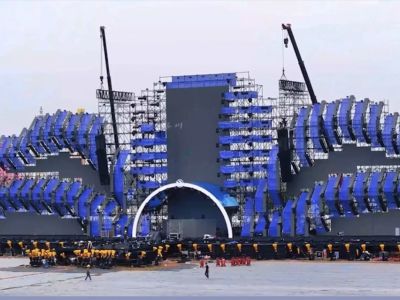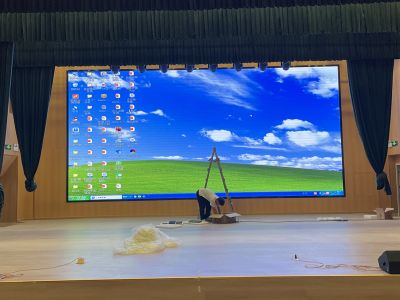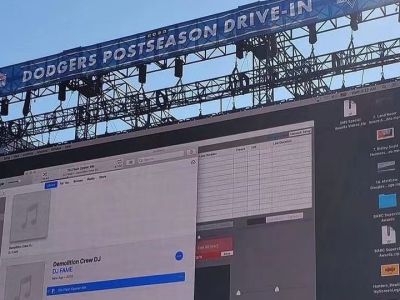Summary of knowledge of small-pitch LED display
With the continuous development and improvement of LED technology, indoor LED display screens, especially small-pitch products, have been widely used in: power production scheduling and control with many characteristics such as seamless splicing, low brightness and high gray, high refresh rate, ultra-high definition, low energy consumption, long life, etc. to meet market demand and energy saving and economic development. Heart, Military Command and Control Center, Urban Management Emergency Command Center, Traffic Management Command Center, Industrial Process Control Display System, Radio and Television Display and Monitoring System, Shopping Mall, Hotel, Communication Information Display System, Financial and Securities Information Display System, Government Enterprise Multimedia Video Conference Display System, mining safety production monitoring system, urban environmental monitoring command system, fire protection, meteorology, maritime flood control command system, airport, subway flight display, safety monitoring system and other wide fields.
How to define the small spacing of LED?
We all know that LED is composed of LED lamp beads, and the distance between the central point of the two LED lamp beads is called point spacing. The display industry generally adopts the method of defining product specifications according to the size of the distance, such as our common P12, P10, P8 (point spacing is 12mm, 10mm and 8mm respectively), etc. As the process progresses, the point spacing is getting smaller and smaller. According to the industry consensus, displays with a dot spacing of less than 2 mm are small. In the current mass-produced display, the minimum point spacing is P1.25, that is, the distance between the center point of the two lamp beads is only 1.25mm.
What are the advantages of small-pitch LED display?
1. Seamless splicing
The splicing large-screen display technology can never avoid the impact of physical borders when meeting customer needs to the greatest extent. Even the ultra-narrow edge DID professional LCD screen still has very obvious splicing seams. Only the led display makes the stitching after splicing meet the seamless requirements, and the advantages of high-density small-spacing led seamless splicing can be highlighted. Show.
2. Intelligently adjustable high brightness
The LED screen itself has a high brightness. In order to meet the comfortable viewing effect of the viewer in strong light and dark light environments and avoid visual fatigue, the brightness can be adjusted with the light sensing system.
3. Better color performance with high grayscale level
Even under low brightness, the grayscale performance of the display is almost perfect. The picture hierarchy and vividness displayed by it is higher than the traditional display, and it can show more image details without information loss.
4. High contrast, faster response speed, high refresh frequency
The number of times the electron beam repeatedly scans the image on the screen. The higher the number of scans, the higher the refresh rate, and the better the stability of the image (picture) displayed. The lower the refresh frequency, the more the image flickers and shakes, and the faster the eyes get tired. Under high refresh, the LED small-spacing screen absorbs the picture stably, has no ripple black screen, clear image edges, and accurately restores the real information of the image.
5. Color restoration and naturalization
Adopting the world's leading point-by-point correction technology, using the principle of LED light emission, it completely retains the authenticity of color, avoids color loss and deviation caused by other display technologies such as backlight projection materials and light running paths, and achieves true color reappearance.
6. Visual experience three-dimensionalization
When customers choose to use 3D playback mode, the splicing wall will present shocking high-definition images. Whether it is live TV, exhibition display, or digital advertising, it can vividly interpret the wonderful visuals and let the audience enjoy an extraordinary visual experience.
How to choose a small spacing LED?
The size and resolution of the point spacing:
The size and resolution of the point spacing are the most important factors when people buy. In actual operation, the smaller the point distance, the higher the resolution, and the better the actual application effect. The smaller the dot spacing of LED small-pitch display products, the higher the resolution and the higher the price. Users should fully consider their application environment and program budget when purchasing products to avoid the dilemma of spending a lot of money but not achieving the expected results.
Maintenance cost:
When users choose LED small-pitch display products, they should consider not only the procurement cost, but also the high maintenance cost. In actual operation, the larger the size of the screen, the more complex the maintenance process, and the maintenance cost will naturally increase accordingly. In addition, the power consumption of small-spacing is not easy to become smaller, and the operating cost of large-sized LED small-pitching displays is usually higher.
LED small-pitch signal transmission compatibility is very important:
The indoor signal access of the led small-pitch display has the requirements of diversification, large number, dispersion, multi-signal same-screen display, centralized management, etc. In actual operation, if the display is to be applied efficiently, the signal transmission equipment must not be underestimated. In the display market, not all LED small-pitch displays can meet the above requirements. When buying products, do not pay attention to the resolution of the product une-sidedly, and fully consider whether the existing signal equipment supports the corresponding video signal and after-sales service.






